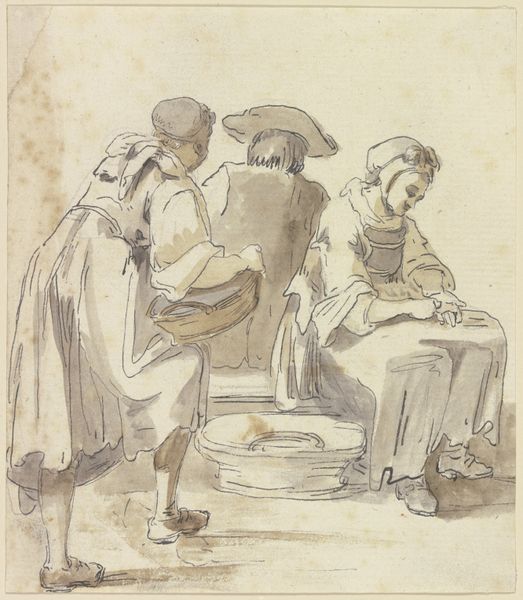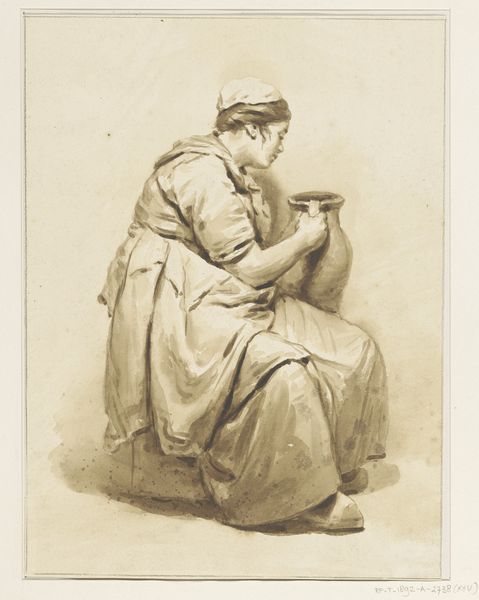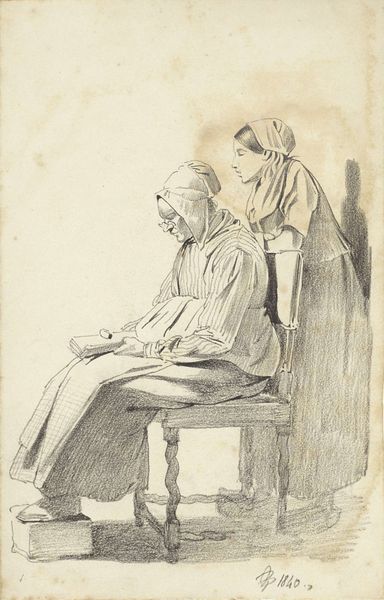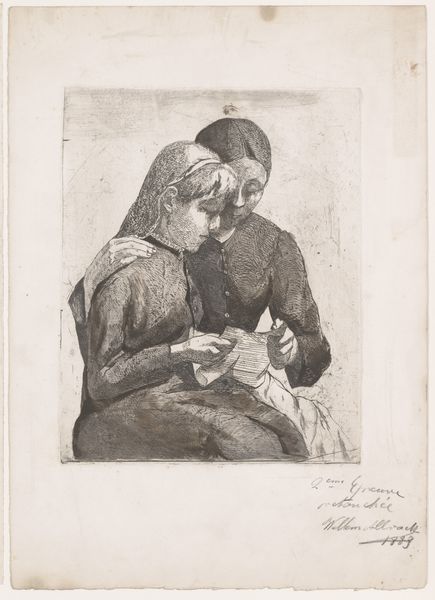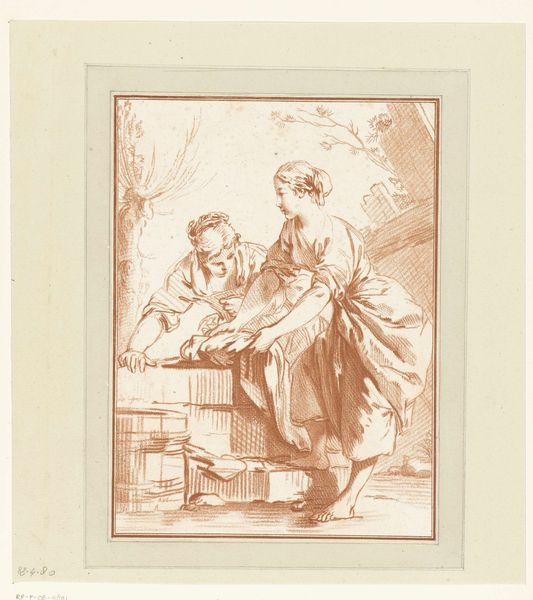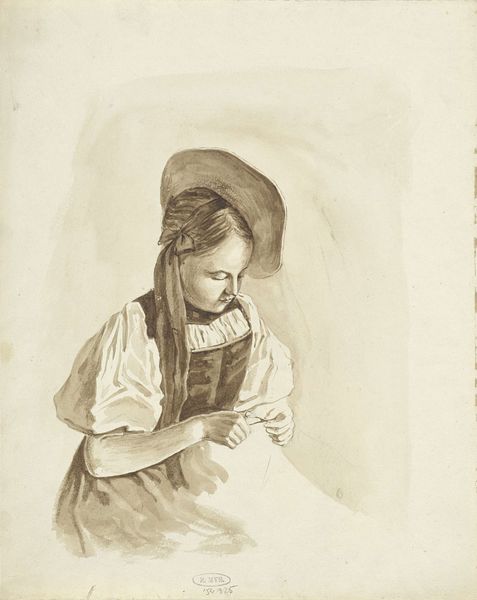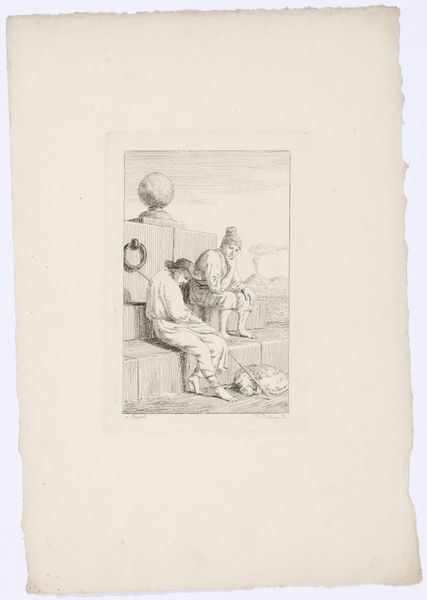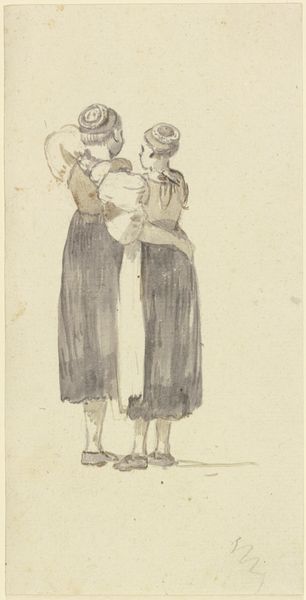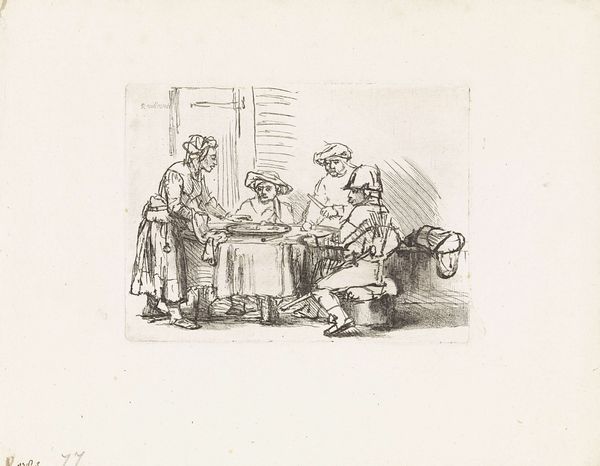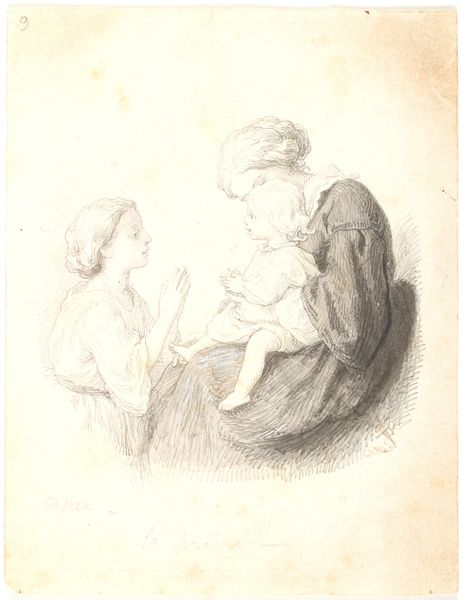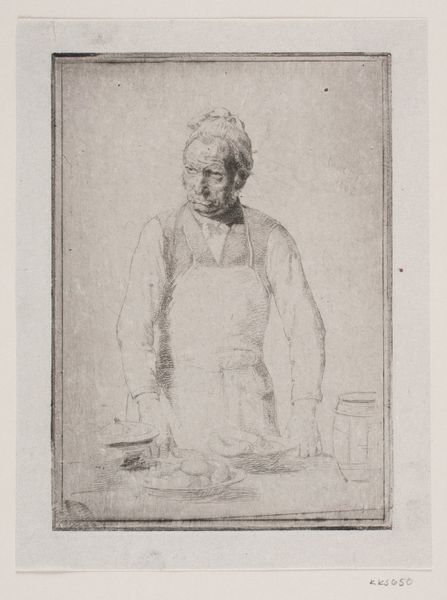
drawing, print
#
portrait
#
drawing
#
neoclacissism
# print
#
line
#
genre-painting
#
history-painting
#
academic-art
#
realism
Dimensions: Sheet (trimmed): 13 11/16 × 10 1/2 in. (34.8 × 26.7 cm)
Copyright: Public Domain
Curator: Here we have Jean-Baptiste Chometon's print, "The Letter," created in 1819. It's currently part of the Metropolitan Museum of Art's collection. Editor: The muted tones lend it a very somber, reflective mood. I am particularly struck by the composition: the placement of the two figures side-by-side, one absorbed in the letter, the other with rosary beads, perhaps lost in contemplation. Curator: It is quite compelling. Chometon captures an intimate domestic scene, reflecting the increased literacy and communication during the period. The print speaks to how ordinary people engaged with the written word. The democratization of information was really taking hold. Editor: Notice the meticulous use of line in rendering the women’s garments; look at the texture implied! The cross-hatching is subtle, yet highly effective in creating depth and volume. It exemplifies academic realism through a starkness I did not initially expect. Curator: I think the print also offers an interesting contrast between generations, right? The younger woman embodies emerging access to knowledge, while the older woman is still rooted in traditional religious practice. This division characterized post-revolutionary France. Editor: Indeed. However, it also conveys a timeless intimacy. See how their hands and gazes form visual connections, regardless of the nature of that bond. There's something universally familiar. It moves beyond a simple historical document and explores core relational connections. Curator: Perhaps "The Letter" reveals both the specifics of a moment in time and also universal emotional themes. This balance is perhaps why it still captivates us today. Editor: I see what you mean. The quiet formal austerity paired with these nuances, it’s a lot to digest in a small picture.
Comments
No comments
Be the first to comment and join the conversation on the ultimate creative platform.
